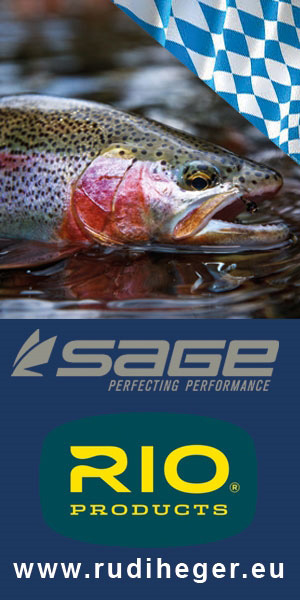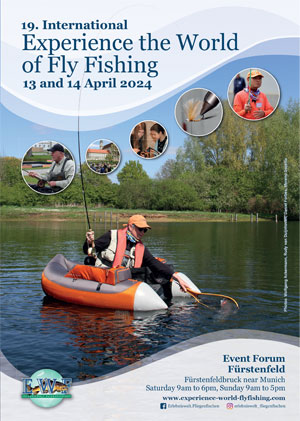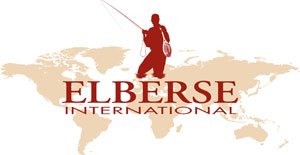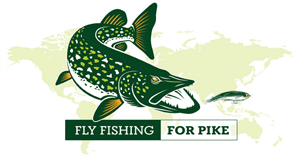Ed Rice, the USA’s maverick inventor of outdoors sports shows, a world-known fly fisher and traveler, and the first living member voted into the California Outdoors Hall of Fame, died at 82 last week in hospice after a long illness.
Tom Stienstra wrote this article for the San Francisco Chronicle.
Rice was best known as the founder of the International Sportsmen’s Exposition, the nation’s most successful and copied outdoor fishing, hunting and travel show in America. The show was first established at the San Mateo County Fairgrounds and opened Moscone Center in San Francisco, and then spread across to venues across the Western U.S., including Sacramento, Eugene, Portland, Seattle, Los Angeles, Phoenix and Denver.

Yet Rice’s passion wasn’t business but flyfishing. Rice fished in 40 countries, six continents, across all of North America, and fished 88 different weeks in Alaska. He’s caught 242 species of sportfish on a fly rod, acknowledged as more than anybody in the world. When his friends asked him to keep track of his world records, he registered eight in two years, then discarded the honors the same way he releases his fish. “I don’t care about records,” he said, “I only care about sharing time with friends and how these experiences make us feel.”
In hospice last week, Rice emerged from days of sleeping and incoherence, what doctors call “a surge,” where he emerged into consciousness and was able to engage clearly for little over an hour, though with periodic lapses. He said that his late wife, Darlene, who died 10 years ago from cancer, had visited him. “Darlene came to me last night,” Rice said. “She told me, ‘I’m waiting for you.’ I feel OK about dying now. I know she’s out there, waiting for me to show up. I’m pretty close now.”
A challenging childhood
Rice grew up in the forests and canyons outside of Chico in Northern California. He said a difficult childhood with an abusive father, caused him to flee to the safety, peace and excitement of creeks, rivers and canyons across the region, out to explore, hike, camp and flyfish. As he grew up, in a provocative choice that became a symbol of how he approached life, Rice learned how to skydive and developed a rare affinity as an expert. He was hired to make more than 1,000 jumps, often as the feature entertainment at county fairs, where we would sail in with pinpoint precision in front of grandstands.
“The only screw up I ever had was when I didn’t pack my own chute,” Rice said. “I stupidly let someone else do it, and the thing wouldn’t open in front of a big crowd, coming down right in front of them. I was barely able to get my little back-up emergency chute to open in time and I hit pretty hard. They told me I’d put on a great show, a spectacular delayed landing. But it was all screwed up, but like a lot of my life, we always seem to make it out.”
From television to show business
When Rice entered television sales, he hit immediate success. He had a big, swashbuckling presence that made many believe in him. “It didn’t take me long to see how things worked,” Rice said. “You could see it, the promotion, sales and timing at the right venue, and I started thinking about putting my first show together.” His favorite event was in San Mateo, which he developed into the No. 1 flyfishing show in America, which hit its peak in 1992 during Robert Redford’s film, “A River Runs Through it.” Dozens of the best known anglers in America appeared on Rice’s stages. Rice’s genius was to provide free seminars to the public, where any attendee could spend free time with the finest, best known and most traveled outdoor experts in America, “and get any question answered.” He was the only show promoter in America to donate free booth space for conservation organizations to help support and increase their membership. To his disappointment, many organizations took this gesture for granted.

Then in 2002 to his equal surprise, Rice became the first living member inducted into the California Outdoors Hall of Fame, and with posthumous awardee John Muir, are still the only nominees to receive 100% of all ballots. When Rice was inducted into the Fly Fishing Hall of Fame, his best friend, Ray Beadle, said it was one of the rare moments in his life that he was touched by an award.
World-renown travels
Rice parlayed his contacts with the world’s best fishing destinations, where for years, he spent far more days afield than at home. By arranging travel and payment via Italy, Rice was among the first in America to open up Cuba and its untouched fishing grounds: the Jardines del la Reina coral reef and its mangrove islands, coral reefs, tidal flats and blue holes. On these trips, Rice is believed to be the only angler in history to catch (and release) the “Grand Slam of the Caribbean” on back-to-back days, that is, bonefish, permit, tarpon and snook.
And yet it was not his fishing greatness in Cuba that many remember from that trip, but rather that he brought $1,000 worth medicine and food, banned from sale by the U.S. Embargo, which he gave to guides and their villages. Rice is believed to be the first to develop flyfishing in the Okavango Delta in Botswana, including for many fierce species with piranha-like teeth that Rice taught locals how to catch.
A lesson in the moment
Another time, in two hours offshore Costa Rica on the Caribbean side, three of us caught five world record Atlantic Bonita (a record since broken). Instead of registering the world records, Rice gave the fish to our guides to help feed their jungle village. Instead of bragging about our catches, I remember how he smiled as he cast into the sea surface, which twitched in tiny ripples as if alive. It was a privilege, he said, to share throwing a line in this water. Over the years, he became afflicted with a series of rare diseases, some believe from exposure to maladies in remote third-world countries that might prey on an unfamiliar U.S.-bred immune system. After a trip to Argentina, he was built by thousands of tiny insects, suffered severe swelling, infection, and in time, blindness.
He became legally blind, and for one of his last trips, he asked me to take him to Lake Rufus Woods, located in remote northeastern Washington. Even blind, casting from his seat, he was still the top rod on the lake. After he released a beauty, roughly a 5-pounder, he made sure the fish was released safely, and the master then put a hand on my shoulder. “Big fish are great,” he said, “but in the end, all that matters is your friends, the people you care about. That’s what it all’s really about.”
Last week in hospice, he echoed that: “Tell my friends I love them. They know exactly who they are.” As he drifted off to unconsciousness, a man like no other who has ever walked this land, had found peace as he departed this world.
Tom Stienstra is The Chronicle’s outdoor writer emeritus.
Rudy van Duijnhoven: “Sincere thanks to Hank Rolfs for sending me the article. I was lucky enough to be invited to several of Ed Rice’s shows many years ago, to give demonstrations there and to take pictures. Together with Ed Rice, I travelled to Venezuela where we fly-fished for payara, peacock bass and many other species of fish. I will always fondly remember our friendship and the time we spend together. Ed was truly one of the greatest fly-fishers of his life-time.”
Also look at:
https://flyfishing-blog.com/flyfishing-blog.com/2021/08/17/at-the-autumn-ewf-barry-ord-clarke/
https://flyfishing-blog.com/flyfishing-blog.com/2021/06/23/fly-tier-konstantin-karagyozov-will-tie-flies-at-ewf/
https://flyfishing-blog.com/flyfishing-blog.com/2021/05/10/more-news-regarding-the-autumn-ewf/






